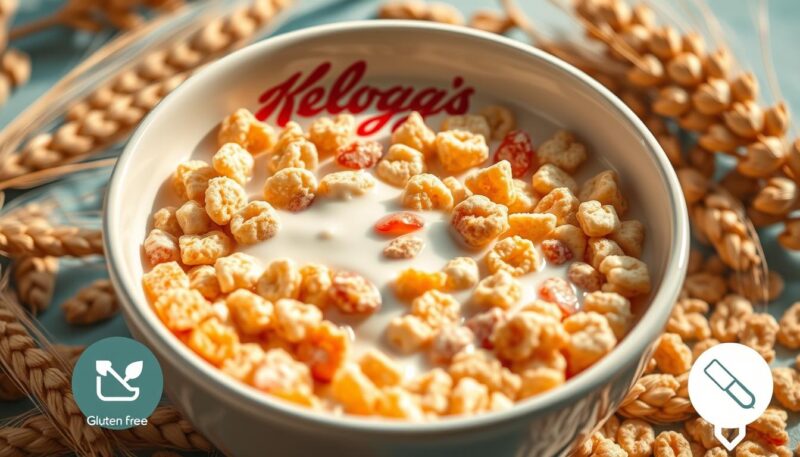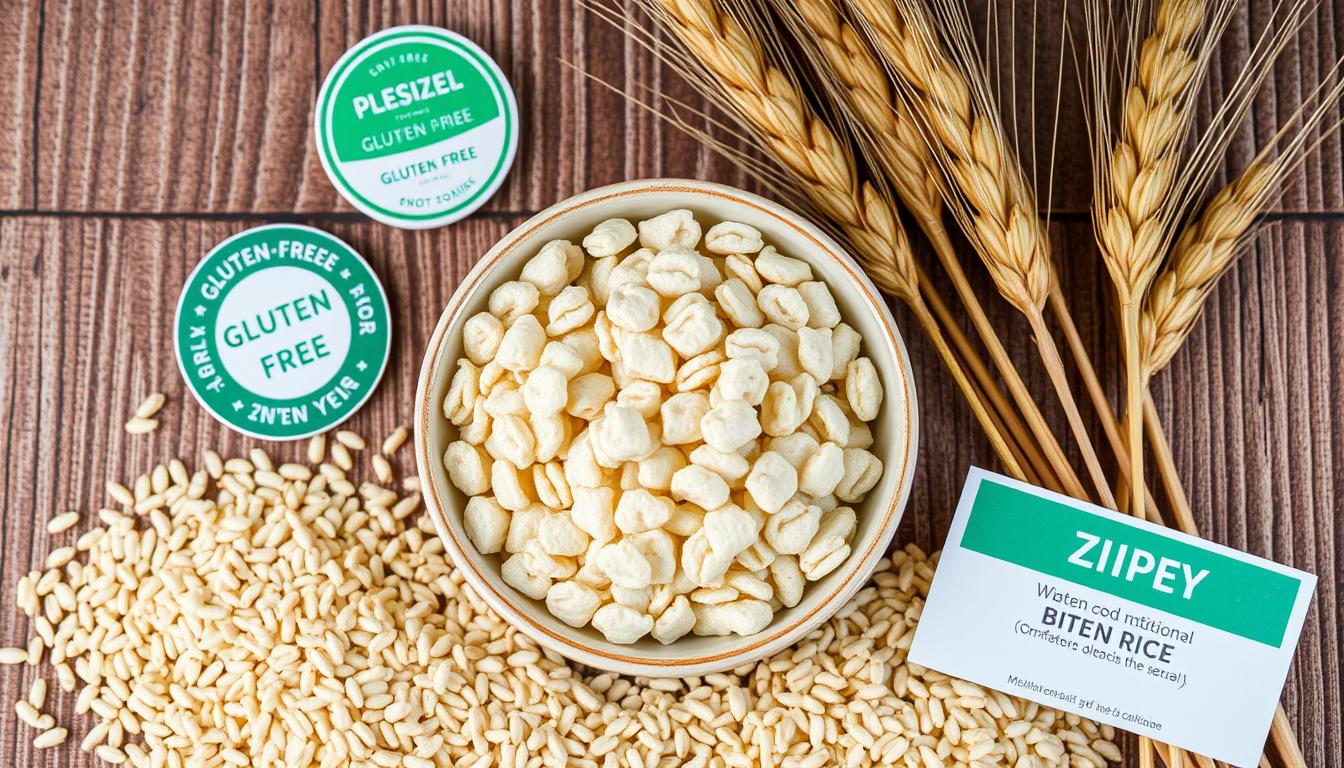As you consider your breakfast options, you may be wondering about the gluten content in Rice Krispies, a beloved cereal for many. With the growing interest in gluten-free diets, it’s essential to understand the ingredients in Rice Krispies and their relationship to gluten. Rice Krispies ingredients and gluten are closely linked, as the cereal contains malt flavoring made from barley, a whole grain related to wheat and containing gluten.
For those following gluten-free diet options, it’s crucial to be aware of the gluten in breakfast cereals like Rice Krispies. You may be surprised to learn that Kellogg’s Rice Krispies cereal used to claim it was Gluten-Free on the box, but this is no longer the case. The presence of malt flavoring, derived from barley, means that Rice Krispies are not gluten-free.
As you navigate the world of gluten-free diets, you’ll want to explore alternative options to traditional Rice Krispies. Brands like Barbara’s Bakery offer organic and gluten-free alternatives, made without added cane sugar. Understanding the ingredients in Rice Krispies and their gluten content will help you make informed choices for your dietary needs.
Key Takeaways
- Rice Krispies contain malt flavoring made from barley, a gluten-containing grain.
- Kellogg’s Rice Krispies are not gluten-free due to the presence of malt flavoring.
- Alternative gluten-free rice cereal options are available, such as Barbara’s Bakery and Nature’s Path.
- Most marshmallows are gluten-free and suitable for use in recipes like gluten-free Rice Krispies treats.
- Dairy-free butter and vegan marshmallows can be used to make gluten-free Rice Krispies treats dairy-free and vegan.
- Gluten-free Rice Krispies treats can be stored in an airtight container at room temperature for 2-3 days or frozen for longer storage.
Understanding Rice Krispies and Their Ingredients
When choosing a cereal, knowing what’s inside is crucial, especially if you have gluten sensitivities. Rice forms the base of Rice Krispies, a naturally gluten-free grain. However, not all Rice Krispies are created equal.
The Basic Components of Rice Krispies
Traditional Rice Krispies include rice, sugar, salt, and malt flavoring. It’s important to note that Kellogg’s Rice Krispies contain malt syrup derived from barley, introducing gluten into the mix. This makes them unsuitable for those asking, are Rice Krispies safe for celiac disease?
Hidden Sources of Gluten in Processing
Reading food labels for gluten is essential to avoid unexpected gluten intake. Look out for ingredients such as:
- Wheat
- Rye
- Barley
- Malt
- Brewer’s yeast
- Graham flour
- Durum
- Semolina
- Spelt
- Bulgur
These can be hidden in the ingredient list, contributing to the gluten in processed foods.
Cross-Contamination Concerns in Manufacturing
Even if a product doesn’t list gluten-containing ingredients, cross-contamination during manufacturing can be a risk. To ensure safety, opt for certified gluten-free products from brands like One Degree, Nature’s Path, or Barbara’s. These companies adhere to strict guidelines to minimize gluten exposure.
By carefully reading food labels for gluten and choosing certified products, you can enjoy your favorite cereals without compromising your health.
Do Rice Krispies Have Gluten? The Definitive Answer
If you’re wondering whether Kellogg’s Rice Krispies contain gluten, the answer is yes. Traditional Rice Krispies include malt flavoring derived from barley, a gluten-containing grain, making them unsuitable for a gluten-free diet.
Kellogg’s once offered a gluten-free version of Rice Krispies, but it was discontinued due to low sales. If you’re seeking alternatives, several gluten-free cereal options are available on the market:
- Bake to Nature Gluten-Free Sprout and Shine Cereal
- Malt-O-Meal Crispy Rice Cereal
- Aldi Millville Crispy Rice Cereal

When selecting a gluten-free cereal, it’s essential to look for certified gluten-free labels to ensure safety. The Gluten-Free Certification Organization (GFCO) provides this verification, helping you avoid gluten cross-contamination and maintain your gluten-free lifestyle confidently.
Conclusion: Making Informed Choices for Your Gluten-Free Journey
Choosing the right cereal is crucial when managing gluten intolerance and cereal intake. Since Rice Krispies contain malt syrup from barley, they aren’t suitable for a gluten-free diet. Fortunately, there are several certified gluten-free alternatives available. Corn Flakes, Puffed Rice Cereal, and Oat Flakes offer similar textures and flavors without the gluten.
Adopting gluten-free living tips can make your mornings enjoyable and safe. Start by reading labels carefully to ensure products are certified gluten-free. Exploring healthy gluten-free breakfasts like yogurt with fresh fruits, smoothie bowls, or homemade gluten-free Rice Krispie treats can add variety to your diet.
Maintaining a balanced and enjoyable gluten-free diet involves trying different options and finding what works best for you. Whether you prefer crunchy cereals or soft alternatives, there’s something for everyone. By staying informed and making thoughtful choices, you can successfully navigate the cereal aisle and support your gluten-free lifestyle.

